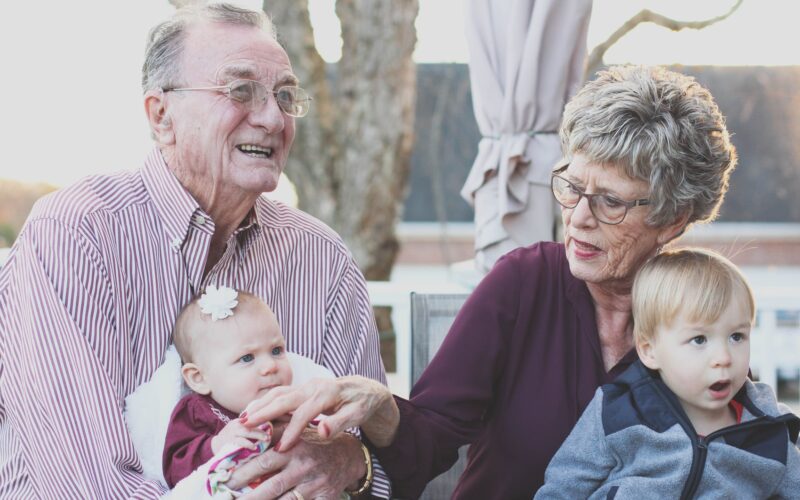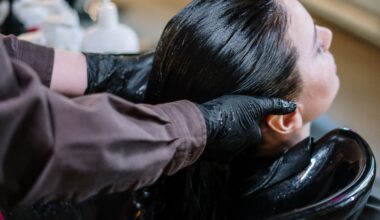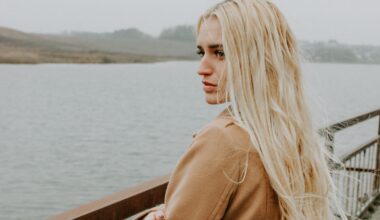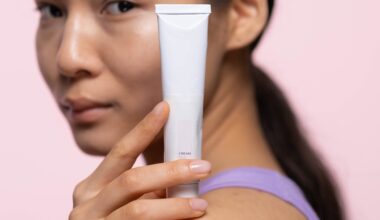Introduction
Hair color, often seen as a simple cosmetic feature, is in fact a fascinating window into our biology, genetics, and the passage of time. From the soft wisps of a baby’s first locks to the distinguished shades of an elder’s mane, our hair color tells a story of age, genetics, environment, and sometimes, just pure mystery. In this article, we will journey through the evolution of hair color, exploring how and why our tresses undergo such remarkable transformations from infancy to our twilight years.
Key Takeaways
- Hair color is determined by the presence and type of melanin in our hair follicles, influenced primarily by our genetics.
- Throughout life, our hair color undergoes several transitions, each marking a unique phase of growth and maturity.
- External factors, such as sun exposure, can play a role in subtle hair color changes, especially during childhood and adolescence.
- The graying of hair, often associated with age, is a complex interplay of genetics, biology, and environmental factors.
- Embracing the natural progression of hair color can offer a beautiful testament to one’s unique journey through life.
The Science of Hair Color
Every strand of hair on our head is a testament to a complex dance of biology and genetics. At the heart of our hair color lies a pigment called melanin. This pigment, produced by cells known as melanocytes, resides within our hair follicles.
There are primarily two types of melanin responsible for the spectrum of hair colors we observe:
- Eumelanin: This type of melanin gives hair a brown or black color. The more eumelanin present, the darker the hair.
- Pheomelanin: This is responsible for reddish and blond shades. Hair with a high concentration of pheomelanin and less eumelanin will appear more blonde or red.
Our genetics play a dominant role in dictating the amount and type of melanin our hair contains. Genes inherited from our parents carry instructions for the mix and quantity of melanin to be produced. This is why family members often have similar hair colors, and why a child’s hair color can be a blend or a throwback to a grandparent or even a distant ancestor.
While genetics lay the foundation, external factors and age can influence the shades and shifts in our hair color over time.
Hair Color in Infancy
A baby’s first hair is a much-anticipated milestone, with family members often eagerly predicting and comparing shades. Interestingly, many infants are born with a lighter hair color than they’ll have in their later years. The soft, delicate hair known as “vellus” hair often appears blonde or light brown, regardless of the genetic predictions.
There are several reasons for this initial lighter shade:
- Melanin Production: In the initial months, a baby’s melanin production is not as active or robust. As they grow, melanocytes become more active, leading to a potential deepening in hair color.
- Environmental Exposure: Melanin also acts as a natural protection against the sun. As infants are not exposed to significant sunlight, the initial requirement for melanin is less.
- Genetic Surprises: Sometimes, genes that dictate hair color can take a while to fully express themselves. An infant born with blonde hair might see a transition to brown as they approach their toddler years, or vice versa.
It’s fascinating to note that the hair color an infant starts with might not be the color they have even a year later. This period of life sees rapid changes, and hair color is no exception.
Transition in Childhood and Adolescence
Childhood and adolescence are dynamic periods of growth, both physically and emotionally. Just as personalities and bodies evolve, so does hair color. During these years, hair often undergoes subtle shifts, sometimes influenced by external factors.
- Sun Exposure: Extended playtimes outdoors, especially during summer, can naturally lighten hair. The sun’s UV rays break down the melanin in hair, leading to a sun-kissed, lighter appearance. This is particularly noticeable in children with blonde or light brown hair.
- Nutrition and Health: Our diet and overall health can sometimes influence hair color. Certain nutritional deficiencies or health conditions might affect the vibrancy and hue of a child’s hair.
- Onset of Puberty: Adolescence brings about a storm of hormonal changes. Hormones can influence the activity of melanocytes. Thus, it’s not uncommon for hair color to darken or even change tone during the teenage years.
- Genetic Revelations: Sometimes, genes related to hair color that were dormant or less active during infancy become more pronounced. This can lead to unexpected shifts in hair shades.
While many of these changes are subtle and natural, they mark the continuous journey of hair color transformation. It’s a testament to the fact that our hair, much like ourselves, is always evolving.
Adult Hair Color
By the time we reach adulthood, most of us have settled into our definitive natural hair color, which will typically remain consistent throughout much of our adult life. However, this doesn’t mean the journey of hair color evolution has reached its end. Here’s what characterizes hair color during adulthood:
- Stabilization of Melanin Production: The melanocytes in our hair follicles have now established a more or less steady production of melanin. This leads to the stabilization of hair color, be it black, brown, blonde, or red.
- Impact of Lifestyle Choices: Activities such as smoking or prolonged exposure to pollutants can have a subtle impact on hair color. For instance, smoking can lead to hair taking on a slightly yellowish hue over time.
- Hair Dye and Treatments: Adulthood is also when many people choose to experiment with hair colors, using dyes and treatments. While these can be fun and refreshing, frequent chemical treatments can impact the natural hair color and its vibrancy.
- Health and Diet: Just as in childhood and adolescence, our overall health and nutritional intake can influence hair color. A balanced diet rich in vitamins and minerals can help maintain the natural sheen and hue of our locks.
- Early Graying: While graying is often associated with the later years, some individuals might notice the appearance of gray or white strands in their 20s or 30s. This can be due to genetics, stress, or certain health conditions.
- Environmental Factors: Chronic sun exposure can lead to a gradual lightening of hair, especially in individuals with naturally lighter shades. This is due to the sun’s rays breaking down the melanin in hair.
While the drastic shifts and surprises of childhood hair color changes might be behind us, adulthood presents its own set of influences and challenges. Understanding and embracing these can help in maintaining the health and beauty of one’s mane.
The Graying Phase and the Aging Process
The metamorphosis from vibrant hues to shades of gray is not just a tale of hair but also an intimate reflection of the aging process. As we age, various physiological changes occur, and the transformation of our hair color is one of the most visible among them.
- Aging and Melanin Production: As we advance in age, the melanocytes in our hair follicles gradually reduce their melanin production. Over time, as less melanin is deposited into the hair shaft, our locks begin to lose their original color, giving way to translucent gray or silver strands.
- Hair Follicle Aging: Aging affects the very structure and health of our hair follicles. Reduced blood flow and a decrease in the number of active follicles can influence the texture and color of the hair that emerges.
- The Role of Hormones: Just as hormonal changes during puberty can influence hair color, shifts in hormone levels due to aging can impact melanin production, leading to graying.
- Cellular Aging and Graying: As cells age, their efficiency and functionality can decrease. The melanocytes responsible for hair pigmentation are no exception. Over time, they might become less responsive or even dormant, leading to a loss of hair color.
- Genetic Aging Clock: Our genes come with an inbuilt ‘aging clock’ that determines many aspects of the aging process, including when we start to gray. If your lineage grays early, it’s likely encoded in your DNA to follow suit.
- Environmental Aging Factors: Years of exposure to environmental stressors like UV rays, pollution, and chemicals can accelerate the aging process of hair, making it more susceptible to graying.
- Aging and Hair Health: Older hair tends to be finer and more brittle. As we age, the protective outer layer of our hair, the cuticle, starts to thin out, making gray hair more susceptible to external damage.
- Embracing Age and Grays: While graying is a natural marker of aging, it’s also a badge of life’s experiences, challenges, and triumphs. In many cultures, gray hair is revered as a symbol of wisdom and maturity.
Aging and graying are two sides of the same coin, each influencing and reflecting the other. While age brings about a myriad of changes, both internal and external, the transformation of our hair color remains one of its most poetic expressions.
The Silver Transition Influenced by Aging
The silvering of hair is not just a shift in color; it’s deeply intertwined with the aging process, reflecting the cumulative experiences and biological changes of one’s life.
- Decline in Melanocyte Activity: With age, the melanocytes in our hair follicles often slow down or cease their melanin production. This results in hair that’s translucent, appearing as shades of silver, white, or even a pale yellow.
- Hair Structure and Aging: The texture and structure of our hair change with age. Silver hair, influenced by the body’s overall aging, might become wirier, thinner, or coarser due to changes in the hair follicle’s shape and reduced natural oils from the scalp.
- Porous Nature of Aged Hair: As hair ages alongside the body, it often becomes more porous. This means silver hair can sometimes absorb contaminants, like from water or certain hair products, leading to a yellowish tint.
- A Testament to Time: Silver and white strands stand as symbols of the passage of time, each one representing wisdom, experiences, challenges, and memories. As skin wrinkles and posture changes, hair too transforms, capturing the essence of aging.
- Embracing the Silver: Just as aging is a natural and inevitable process, so is the transition of hair to its silver state. Many view it as a reflection of their life’s journey, choosing to wear it as a badge of honor and maturity.
The progression to silver is more than a color change; it’s a mirror to one’s aging, reflecting the depth, richness, and intricacies of a life lived fully.
Conclusion
Our hair is an ever-evolving tapestry, richly woven with the threads of genetics, environment, lifestyle, and age. From the soft hues of infancy to the distinguished shades of our later years, each phase of hair color tells a unique story. The journey from vibrant colors to serene silvers is not just about pigments and melanocytes; it’s a profound reflection of the journey of life itself.
As we age, our silver strands become symbols of the wisdom we’ve accrued, the challenges we’ve faced, and the memories we’ve created. Embracing the natural progression of hair color allows us to celebrate each chapter of our life, recognizing the beauty and depth in every shade.
In understanding the journey of hair color, we find a deeper appreciation for the natural processes of life and aging. It’s a reminder that change is constant, and in this change lies the beauty of our shared human experience.






